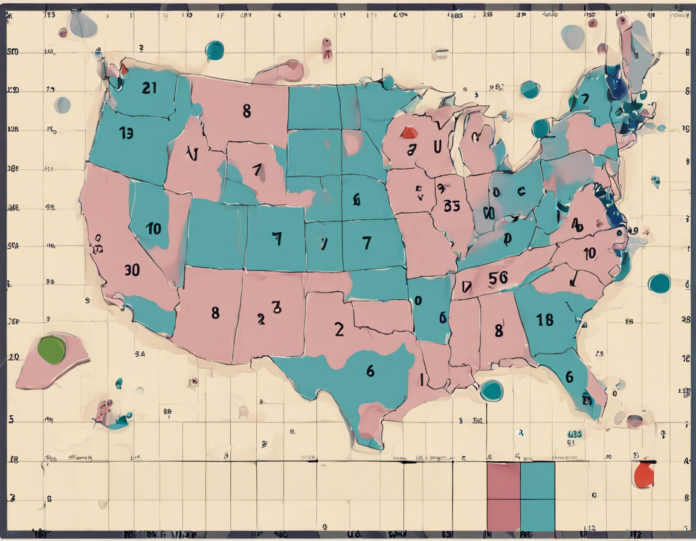Introduction
In a leap year, one additional day is added to the calendar to keep it synchronized with the astronomical year. A leap year occurs every four years. However, have you ever wondered about the probability of a specific day occurring a certain number of times in a leap year? In this article, we will delve into the probability of 53 Sundays appearing in a leap year.
Understanding Leap Years
Before we dive into the probability of 53 Sundays in a leap year, let's first understand the concept of leap years. A leap year consists of 366 days instead of the usual 365 days. This extra day, February 29th, is added to the calendar. The purpose of a leap year is to account for the fact that the Earth's orbit around the Sun takes approximately 365.2425 days, not precisely 365 days.
Theoretical Probability of Specific Days in a Leap Year
In a leap year, each day of the week occurs 52 times, except for one day which occurs 53 times. This is because 52 weeks make up a year, leaving one additional day. Therefore, the probability of a specific day falling 53 times in a leap year can be calculated by dividing the number of favorable outcomes (1 day occurring 53 times) by the total number of possible outcomes (7 days of the week).
Calculating the Probability of 53 Sundays in a Leap Year
To determine the probability of 53 Sundays occurring in a leap year, we can use the following formula:
[ P(E) = \frac{n(E)}{n(S)} ]
Where:
- ( P(E) ) is the probability of 53 Sundays
- ( n(E) ) is the number of favorable outcomes (1 day occurring 53 times, in this case, Sundays)
- ( n(S) ) is the total number of possible outcomes (7 days of the week)
Therefore, the probability of 53 Sundays in a leap year is:
[ P(E) = \frac{1}{7} ]
[ P(E) = 0.1429 or approximately 14.29% ]
Interpreting the Result
The probability of 53 Sundays occurring in a leap year is approximately 14.29%. This means that in any given leap year, there is a 14.29% chance that Sundays will occur 53 times. The same principle applies to any specific day of the week in a leap year.
Factors Affecting the Probability
While the theoretical probability of 53 Sundays in a leap year is straightforward, certain factors can affect the actual occurrence of this phenomenon. These factors include:
-
Calendar Anomalies: Some calendar systems may have anomalies that affect the distribution of days in a leap year, potentially altering the probability of certain days occurring 53 times.
-
Cultural Events: Certain cultural events or holidays may cause variations in the distribution of days, impacting the probability of 53 Sundays or any other specific day.
Practical Applications
Understanding the probability of 53 Sundays in a leap year may have practical applications in various fields, including:
-
Calendar Systems: Useful for calendar designers and planners to ensure balanced distribution of days in a leap year.
-
Scheduling: Helpful for event planners looking to optimize scheduling and avoid potential biases in the distribution of days.
Conclusion
In conclusion, the probability of 53 Sundays occurring in a leap year is approximately 14.29%. This calculation is based on the principle of one day occurring 53 times in a year due to the additional day in a leap year. While the theoretical probability provides a general understanding, various factors can influence the actual distribution of days in a leap year. Understanding these probabilities can have practical implications in calendar design and event planning.
Frequently Asked Questions (FAQs)
1. Is the probability of 53 Sundays the same for other days of the week in a leap year?
- Yes, the probability of any specific day occurring 53 times in a leap year is the same, approximately 14.29%.
2. Can leap seconds affect the probability of 53 Sundays in a leap year?
- Leap seconds, which are occasionally added to Coordinated Universal Time (UTC), do not impact the probability of days occurring in a leap year.
3. Are there any special considerations for determining the probability of specific days in a leap year?
- While the theoretical probability is straightforward, anomalies in certain calendar systems or cultural events may influence the actual distribution of days.
4. How does the Gregorian calendar handle leap years?
- The Gregorian calendar adds an extra day, February 29th, every four years to account for the Earth's orbit around the Sun.
5. Are there any real-world applications of understanding the probability of days in a leap year?
- Yes, calendar designers, event planners, and schedulers can benefit from understanding these probabilities to ensure balanced distribution and avoid biases in scheduling.
6. Is the probability of 53 Sundays in a leap year constant over time?
- Yes, the probability remains constant as long as the leap year system is in use and the calendar remains consistent.
7. How can anomalies in calendar systems affect the distribution of days in a leap year?
- Anomalies such as irregular calendar adjustments or cultural events can disrupt the expected distribution of days, potentially altering the probability of specific days occurring 53 times.
8. Can the probability of 53 Sundays be different in different calendar systems?
- Yes, different calendar systems may have unique features that can influence the distribution of days, leading to varying probabilities.
9. What tools or methods can be used to calculate the probability of specific days in a leap year?
- Basic probability calculations and understanding the principles of leap years are sufficient to determine the probability of days occurring in a leap year.
10. Are there any historical events or traditions related to the distribution of days in a leap year?
- Some cultures and traditions may have specific beliefs or practices related to certain days in a leap year, which can influence their significance beyond probability calculations.

